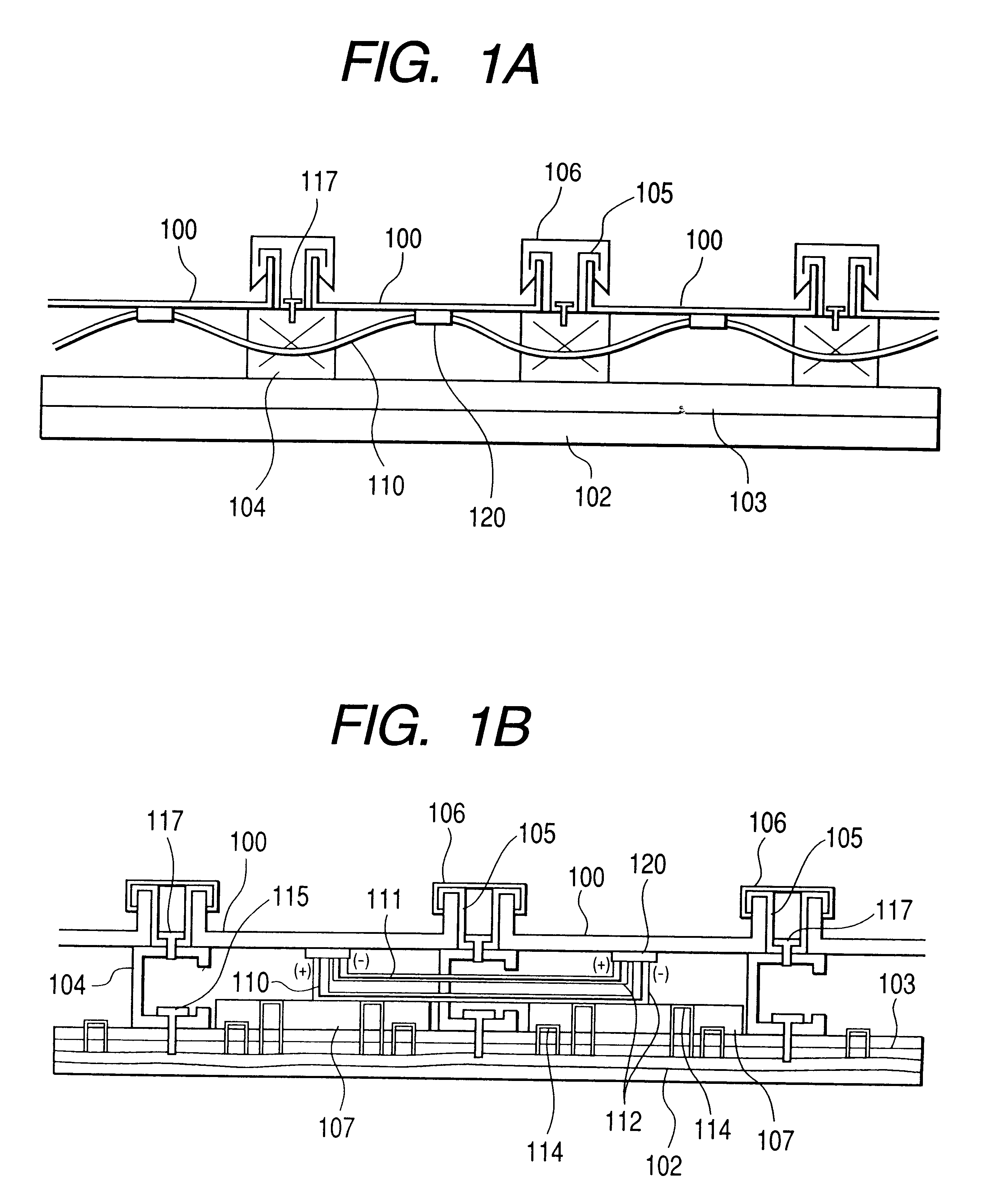Solar cell module, enclosure with solar cells, enclosure installation method, and solar cell system
a solar cell and solar cell technology, applied in photovoltaic supports, pv power plants, sustainable buildings, etc., can solve problems such as increased difficulty in operation, electric connecting parts may be pulled too hard, and operation is difficul
- Summary
- Abstract
- Description
- Claims
- Application Information
AI Technical Summary
Benefits of technology
Problems solved by technology
Method used
Image
Examples
example 2
is described below in detail with reference to FIG. 16A.
The solar cell element comprised a crystalline silicon solar cell. Grid electrodes were attached to the cell element, and two crystalline silicon solar cell elements were connected in series. A solar cell module 210 was produced by sealing the series-connected crystalline silicon solar cells 212 with a glass surface material 211, a back sealing material 214 consisting of an aluminum foil sandwiched by moisture-resistant fluorine resin, and EVA 213 as a filler.
In the terminal draw-out portion of the solar cell module, two terminal draw-out holes were opened in an aluminum foil sandwiched by moisture-resistant fluorine resin (Tedler (Du Pont Company) / aluminum foil / Tedler) and plus and minus electrodes were drawn out through the holes, similarly as in Example 1.
A terminal draw-out box 233 and electric connecting members 231 and 232 were mounted similarly as in Example 1.
Then, the two solar cell modules 210 were sandwiched between ...
example 3
Solar cell modules were produced in the same manner as in Example 2 except that the solar cell element comprised polycrystalline silicon instead of crystalline silicon. Two solar cell modules were sandwiched between frames 220, which were then mounted on the underlaying material 240 and the substrate material 250. A polyethylene film 237 was laid like a "sheet" as a non-contact means on the rear material 235 that had been installed beforehand, and the CV cables 231 and 232 that were electric connecting members electrically connecting the adjacent solar cell modules were directly installed to produce a polycrystalline silicon solar cell module enclosure (FIG. 16C).
Due to its high conversion efficiency, the polycrystalline silicon solar cell module according to this example provides a larger amount of current than that of amorphous silicon. Therefore, the electric connecting member requires thicker electric wires, which are inevitably harder. Consequently, this example does not allow ...
example 4
This example is the example in which a sheet was installed as a non-contact means similarly as in Example 3. Unlike the solar cell module of a ribbed seam roof type of Example 1 which was bent as shown in FIG. 7, the module of this example is of a lateral laying type which was bent as shown in FIG. 17, that is, the module was bent in the opposite directions, instead of the same direction as in FIG. 7. The cross-sectional view of a solar cell module 900 in FIG. 18 is taken along the line 18--18 of the lateral laying type solar cell module 900 in FIG. 17. The enclosure with solar cells shown in FIG. 18 comprised the same amorphous silicon solar cells as in Example 1. Reference numeral 1010 designates a terminal box. As shown in FIG. 18, the lateral laying type solar cell modules 900 installed In the vertical direction were fixed by metal suspension devices 1020, which were directly fixed to a water-tight asphalt sheet acting as an underlaying material 1040, a rear material 1050, and a...
PUM
 Login to View More
Login to View More Abstract
Description
Claims
Application Information
 Login to View More
Login to View More - R&D
- Intellectual Property
- Life Sciences
- Materials
- Tech Scout
- Unparalleled Data Quality
- Higher Quality Content
- 60% Fewer Hallucinations
Browse by: Latest US Patents, China's latest patents, Technical Efficacy Thesaurus, Application Domain, Technology Topic, Popular Technical Reports.
© 2025 PatSnap. All rights reserved.Legal|Privacy policy|Modern Slavery Act Transparency Statement|Sitemap|About US| Contact US: help@patsnap.com



